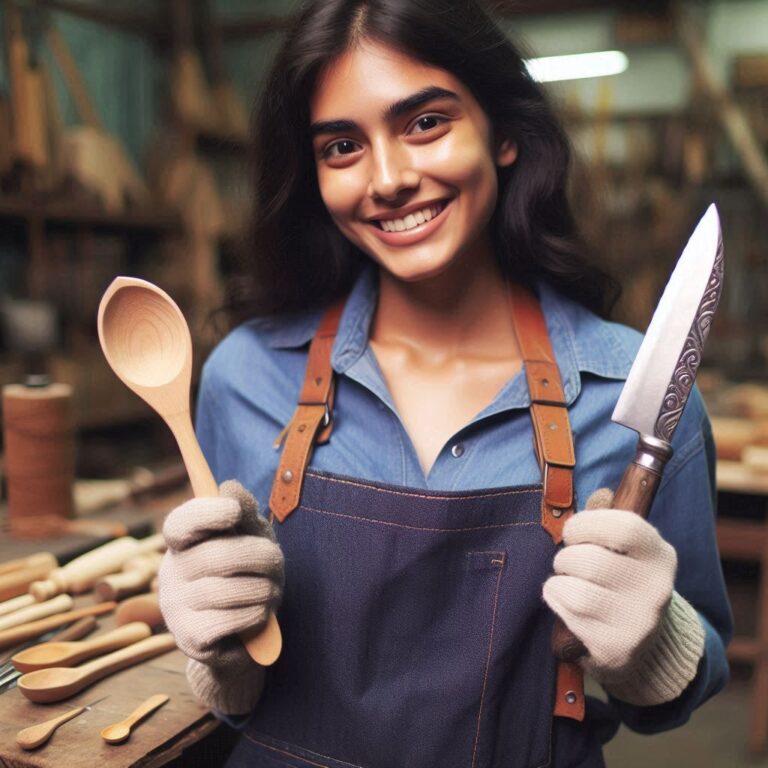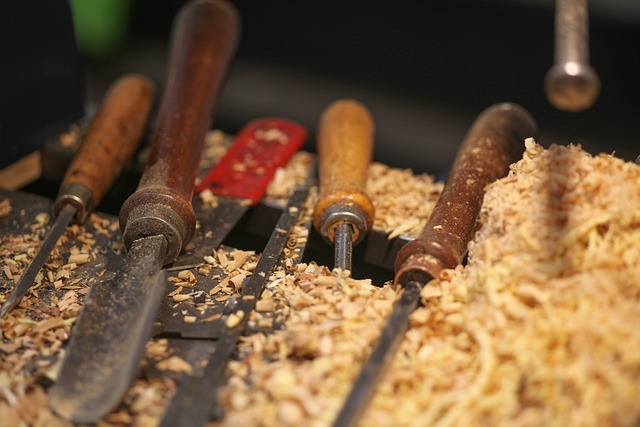What Tools Are Good for Wood Carving?
The everything of tools you need to know
I Thought I Just Needed a Knife—Turns Out, I Was Wrong
A couple of winters ago, I found myself aimlessly scrolling through YouTube, buried under a pile of blankets and a sense of creative boredom. That’s when I stumbled on a guy carving a spoon from a chunk of wood. No fancy machines. Just his hands, some tools, and a vision.
“How hard could it be?” I thought. Spoiler: harder than it looks—especially when you don’t know the right tools to use.
If you’re standing at the beginning of your wood carving journey, wide-eyed and maybe a bit overwhelmed by all the tool options out there, you’re in the right place. This guide will help you figure out what tools are good for wood carving, whether you’re a total newbie or ready to go beyond whittling sticks in your backyard.
What Tools Do I Need to Start Wood Carving?” — Let’s Break It Down
You’ve probably searched this exact question. And while the internet is flooded with lists, most of them toss 20+ tools at you and call it a day. Here’s the truth: you don’t need a massive toolkit to start wood carving—you just need the right ones.
At the bare minimum, a beginner needs:
- A reliable carving knife
- A way to sharpen it
- A piece of soft wood (like basswood)
- And yes, maybe some band-aids, because we’ve all been there
Lisa from Seattle and Her Spoon Carving Obsession
Lisa’s a full-time graphic designer who started wood carving during the pandemic. She told me she bought a “spoon carving kit” online out of pure boredom.
“I didn’t expect it to be so therapeutic,” she said. “Now I carve during my lunch breaks. My coworkers think it’s weird—I think it’s magic.”
Her kit came with a straight knife, a hook knife, and a piece of basswood. That’s it. And she’s made over 50 hand-carved spoons since.
So yes, spoon carving kits are totally worth it, especially for beginners looking to dip their toes into the hobby without drowning in tool choices.

Wood Carving Tools Near Me- Where to Look Locally
You’d be surprised how many people Google this exact phrase. Whether it’s the feel of a tool in your hand or a chance to talk to another human being who knows what a gouge is—buying tools in person can be a game changer.
Try checking out:
- Local woodworking shops
- Community maker spaces
- Weekend carving classes
You might even find “wood carving classes near me” that come with free beginner tool kits and in-person guidance—ideal for anyone who’s afraid of slicing their thumb off on day one.
“Best Wood Carving Tools for Beginners” – My No-Fluff Recommendations
Alright, let’s get real. If you’re looking for the best tools to start wood carving, here’s what you actually need—and why:
- Carving Knife
Your MVP. Look for something with a short, strong blade and a comfy grip. The BeaverCraft C4 or Morakniv 120 are top choices. These have thousands of positive reviews and are perfect for beginners.
- Hook Knife (for Spoon or Bowl Carving)
If you’re even thinking about making spoons, get a hook knife. The curve helps scoop out the bowl of a spoon smoothly.
- Sharpening Tools
A leather strop and polishing compound are beginner-friendly sharpening tools. Sharp tools = clean cuts and fewer injuries.
- Gloves or Thumb Guard
Not essential, but if you’re nervous about cutting yourself, these can boost confidence.
And if you’re carving for hours? A comfy chair, good lighting, and maybe some lo-fi music. Trust me—it helps.

How to Sharpen Wood Carving Tools” Without Losing Your Mind
A lot of beginners struggle here. I did too. My first few carvings looked like I attacked the wood with a butter knife.
Here’s what works:
- Use a leather strop with a little polishing compound after each session.
- For serious dulling, go with a sharpening stone.
- Watch YouTube videos by actual woodworkers—there’s no shame in learning from others.
Keyword Tip: “How to sharpen wood carving tools” is a high-volume search, so don’t forget to drop that in your SEO content!
“Wood Carving Tips for Beginners” That I Wish I Knew Earlier
Real talk? My first carving project was a disaster. I tried to make a bear and ended up with something that looked like a deformed potato. Here’s what I wish someone told me:
- Start with basswood. It’s soft, affordable, and forgiving.
- Keep your knife sharp. Dull blades don’t just make carving harder—they make it more dangerous.
- Carve away from your body. Always.
- Don’t aim for perfection. Your first few pieces will be weird. That’s okay. It’s part of the fun.
Real Problem: “I Want to Carve But Don’t Know Where to Start”
That’s the exact feeling many beginners have. The world of gouges, V-tools, chisels, and mallets can be intimidating.
So start small.
- Buy a beginner wood carving kit with just the essentials.
- Watch a tutorial and follow along with a basic project—like a mushroom or a leaf.
- Share your first carving online (even if it’s terrible). You’ll find a whole community cheering you on.
Why Wood Carving is More Than Just a Hobby
Wood carving is slow. Intentional. You can’t rush it. And in a world of swipes and scrolls, that’s kind of beautiful.
It’s tactile. Messy. Frustrating. But it also teaches you patience, focus, and appreciation for the little things.
You start to notice the texture of the wood. The sound your blade makes. The way one clean cut feels satisfying in your soul.
Final Thoughts: What Tools Are Good for Wood Carving?
If you’re still asking yourself, “What tools do I need to start wood carving?”, here’s your simple starter pack:
- A sharp carving knife
- A hook knife if you’re into spoons
- A leather strop or sharpening tool
- Safety glove (optional but nice)
- And a whole lot of curiosity
You don’t need the fanciest set. You don’t need a workshop. You just need the right tools, a chunk of wood, and a little bit of wonder.
So go carve something. Start with a stick. Make a spoon. Mess up a few times. And remember—every master carver once made something that looked like a potato.

